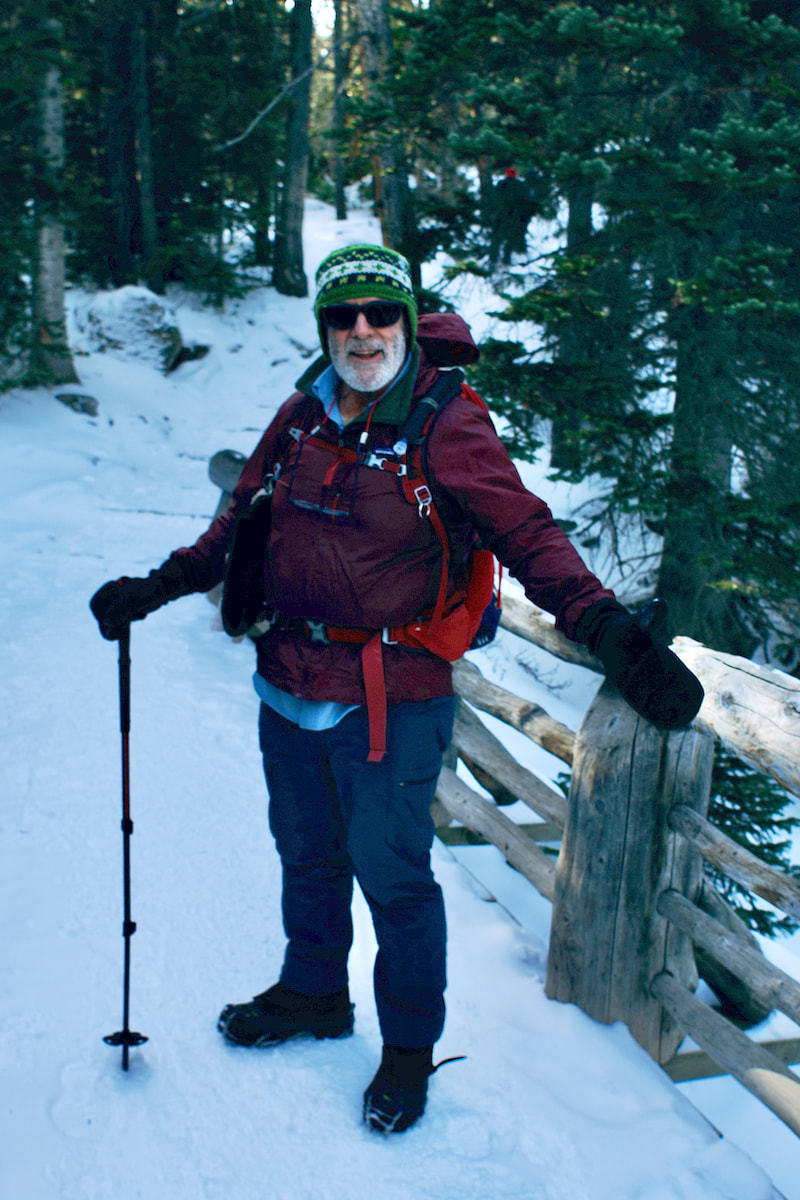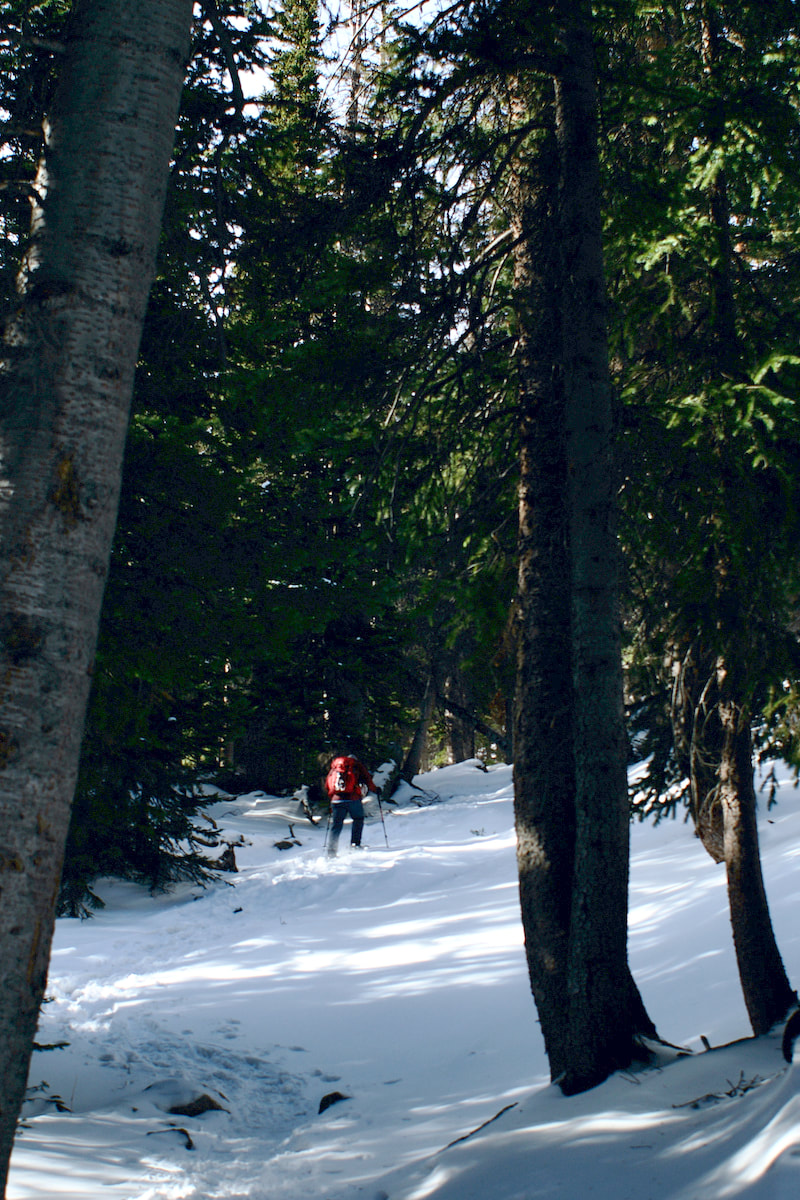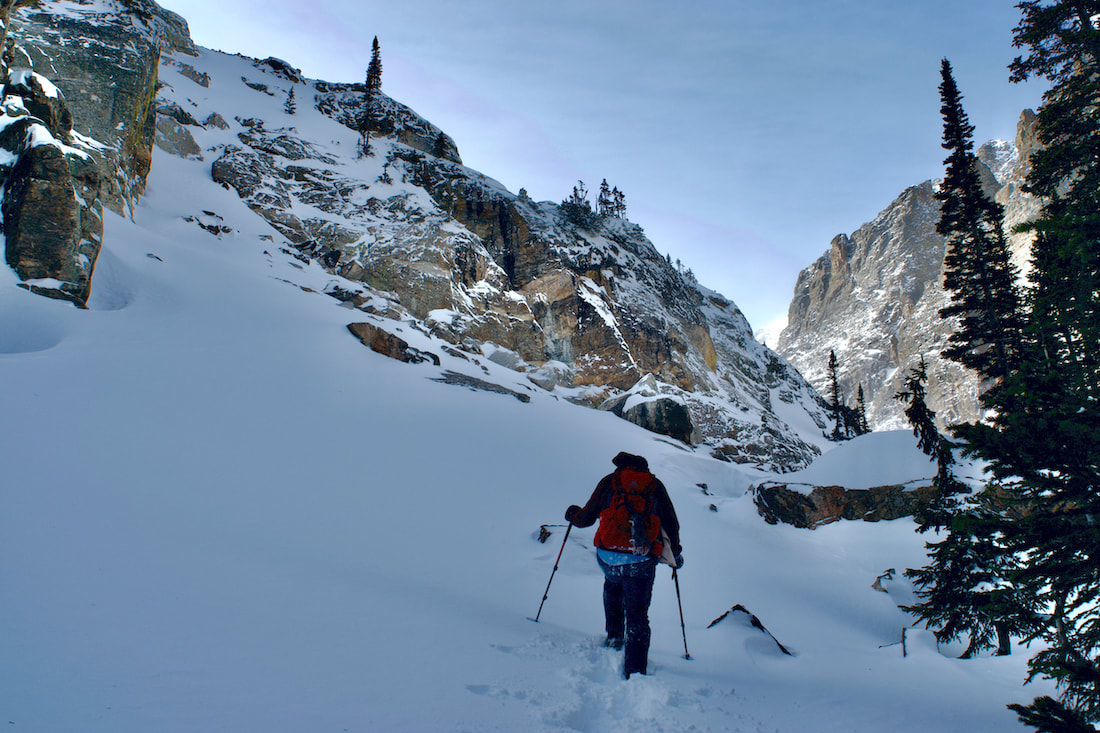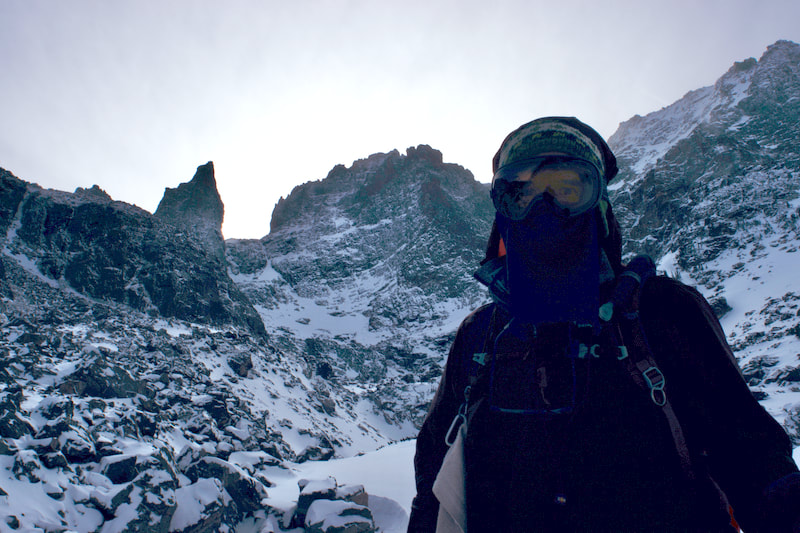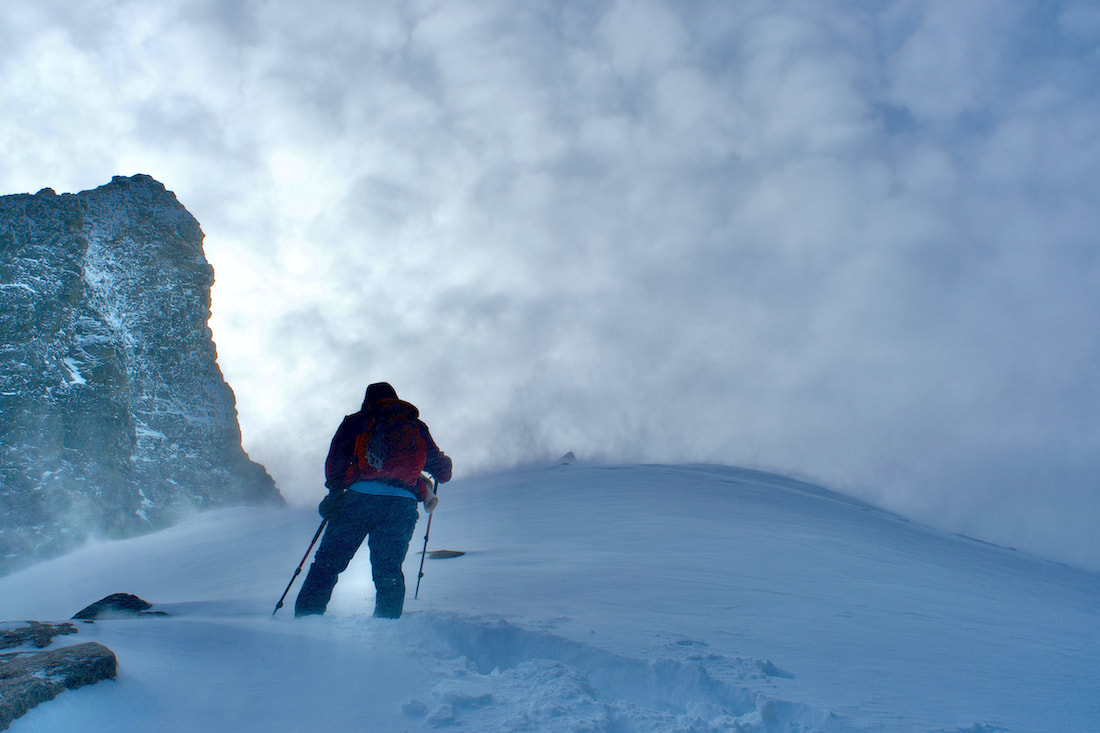|
Notes from the
Trail |
|
Yesterday was Winter Solstice. Over the last 48 hours or so, on the last day of Fall, we have been experiencing a winter wind storm with steady nonstop high winds and incredibly forceful gusts. The kind of wind that if you were a pica up in the tundra, you would want to be deep in your little cozy hole, far below the surface, surrounded by lots of dry flowers and grasses, curled up in a tight ball, fast sleep with visions of sugar-plums dancing in your head, while the wind ravaged those poor little tundra plants at the surface. It’s the kind of wind that sculptures bristlecone pine trees into marvelous twisted living art. The kind of wind that is so forceful it inspires awe. Having completed our shakedown trek to Sky Pond two weeks earlier, my brother and I felt ready to take on winter as it is on the east side of the Divide. So, late in the week last week we decided to head to Andrews Glacier, one of the eight named glaciers in Rocky Mountain National Park. Andrews Glacier sits between Taylor Peak to the south and Otis Peak to the north. Andrews Tarn is nestled at the base of the Andrews Glacier which, over the centuries, carved out a very high hanging valley that sits on the other side of The Sharkstooth Ridge from Sky Pond.
Still, it was warm enough that as we worked our way up, I would occasionally pull off my cap off my head to regulate my body temperature. Once I cooled down enough, the cap went back on. We continued up the Sky Pond trail until crossing on the footbridge that spans Andrews Creek, and then branched off the main trail and began heading into the Andrews Creek drainage.
The snow remained soft and we were aware that, in certain places, there was the potential for creating a small snow slide, so we stayed near the trees until we ascertained the small ridge that led up to the Tarn. That was the last stretch, and it proved to be a challenge. The wind was steady at this point and the snow, even on the crest of the ridge, was fairly deep and sugary. Every time Kip would attempt a big step up, the snow underneath slid and he would loose his footing. The day of breaking trail had taken a toll and making progress became frustrating. Having taken the easier task of following for most of the day, I offered to make an attempt to break the path up this final stretch. I jammed the toe of my snowshoes deep into the snow and pushed down trying to make a step, which worked most of the time. Slow progress with rests kept us moving up and we finally made it to The Tarn. Our hard efforts were rewarded with the strongest, most forceful winds of the day. The wind was ferocious. There would be no lingering for afternoon snacks here. I quickly moved into a position to snap a few photos that I hoped would turn out, then we carefully worked our way back down out of the blast. Once down into the treeline, we did not follow our tracks out, but choose instead to stay in the basin until we reached the Sky Pond trail, completing our loop. Our legs were tired, but we knew darkness was approaching quickly. We barely beat the darkness back to the parking lot and found that we were the last car in the lot. Cheers went up at what had turned into an adventurous day.
0 Comments
Leave a Reply. |
"The wild requires that we learn the terrain, nod to all the plants and animals and birds, ford the streams and cross the ridges, and tell a good story when we get back home." ~ Gary Snyder
Categories
All
“Hiking -I don’t like either the word or the thing. People ought to saunter in the mountains - not hike! Do you know the origin of the word ‘saunter?’ It’s a beautiful word. Away back in the Middle Ages people used to go on pilgrimages to the Holy Land, and when people in the villages through which they passed asked where they were going, they would reply, A la sainte terre,’ ‘To the Holy Land.’ And so they became known as sainte-terre-ers or saunterers. Now these mountains are our Holy Land, and we ought to saunter through them reverently, not ‘hike’ through them.” ~ John Muir |
© Copyright 2025 Barefoot Publications, All Rights Reserved

